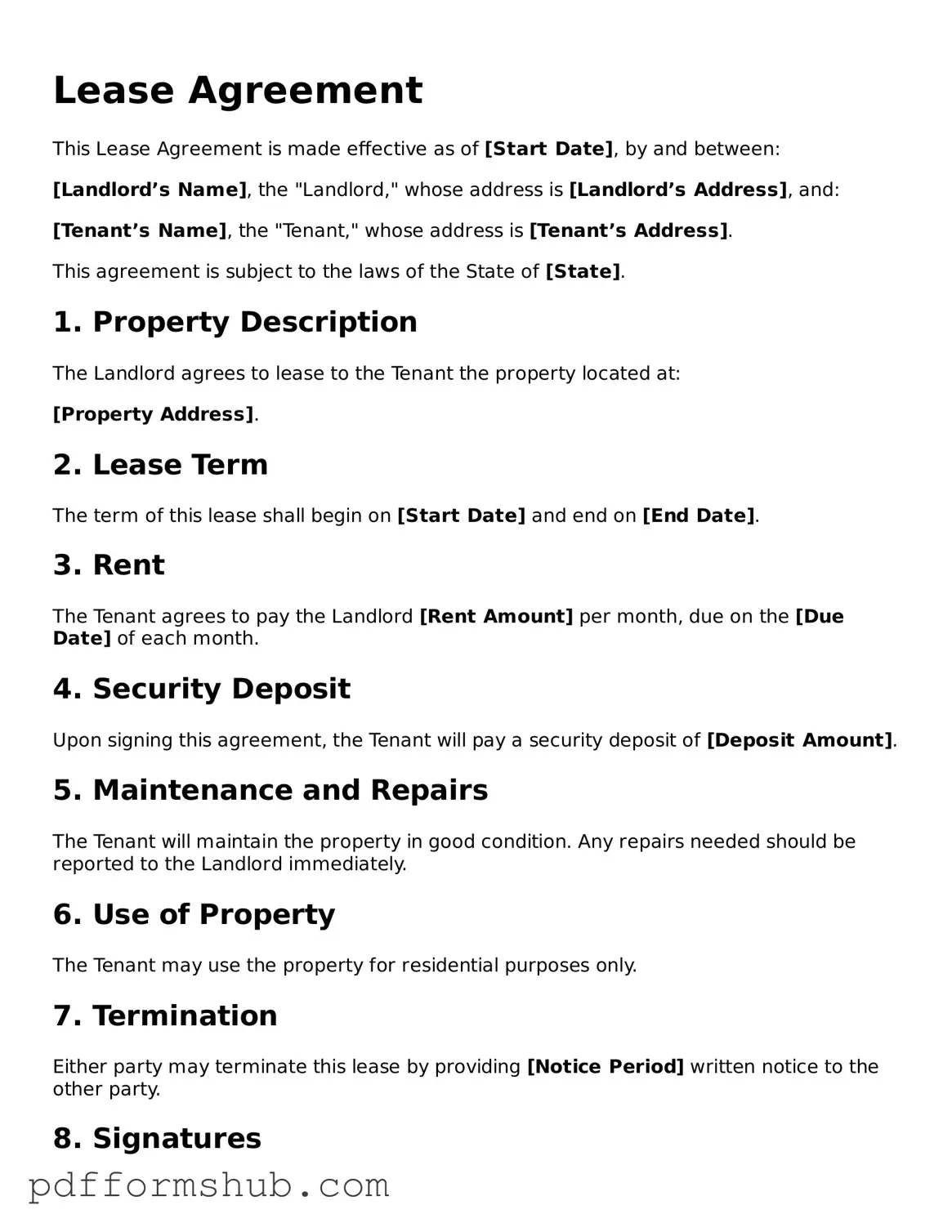When entering into a rental arrangement, a Lease Agreement form serves as a crucial document that outlines the terms and conditions agreed upon by both the landlord and the tenant. This form typically includes essential details such as the duration of the lease, the amount of rent due, and the specific responsibilities of each party regarding maintenance and repairs. Additionally, it addresses security deposits, late payment penalties, and rules regarding pets or alterations to the property. Understanding these key components is vital for both landlords and tenants, as they help ensure a smooth and transparent rental experience. Furthermore, the Lease Agreement often includes clauses that protect the rights of both parties, providing a framework for resolving disputes should they arise. By clearly delineating expectations and obligations, this document fosters a sense of security and accountability in the landlord-tenant relationship.
